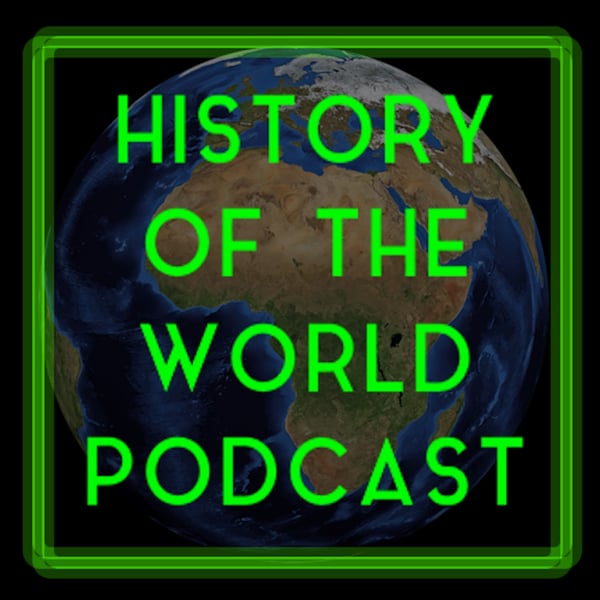Vol 3 Ep 74 - Teotihuacán
History of the World podcast
Chris Hasler
4.8 • 971 Ratings
🗓️ 13 June 2021
⏱️ 42 minutes
🧾️ Download transcript
Summary
600 BCE - 750 CE - The greatest multi-pyramid site of the Americas and a very mysterious home to some of the most comfortable regular citizens of the entire ancient world.
--- Send in a voice message: https://podcasters.spotify.com/pod/show/historyoftheworldpodcast/messageTranscript
Click on a timestamp to play from that location
| 0:00.0 | The History of the World Podcast, written and presented by Chris Hasler |
| 0:14.7 | volume three the classical world episode 74 |
| 0:20.1 | Teotia can Teo Tiawakan. So, In this episode we will start in the modern capital city of Mexico which is called Mexico City. |
| 0:56.5 | Among the southern suburbs is an archaeological site called Qui Quil, and this site is believed to date back to the second millennium |
| 1:06.6 | BCE, a time which we know to be contemporary to the Olmec culture which had emerged in the south of the modern country of Mexico. |
| 1:17.0 | Qui Quilco's standout feature is something described as a circular pyramid. |
| 1:26.9 | Anything circular cannot really be correctly described as a pyramid, but it certainly seems that this building is of the same ilk as other pre-Columbian American pyramids. |
| 1:35.0 | It is simply that this one is circular instead of angular. |
| 1:40.0 | We can even make the comparisons of Qui Quilco with the Zappertex site of Monte Alban, which featured heavily during episode 73. |
| 1:50.0 | We learned about Monte Alban that it had a ceremonial Acropolis and was surrounded by |
| 1:58.0 | lesser classified individuals residing on the lower lands. |
| 2:04.0 | We can detect that the same kind of stratified culture existed at Qui Quilco and that many thousands |
| 2:10.5 | of people lived there. |
| 2:18.0 | Mexico City is built on top of the site of a number of ancient lakes which would have been of use to the people who lived around them. |
| 2:26.1 | These lakes were of great use to the residents of Teau-Tau-Tau-Kan and the later city of Tenochtitlan, before the Spanish migrants would need to start draining these lakes |
| 2:34.6 | to prevent flooding to the growing Mexico City. |
| 2:38.6 | Now there are no signs of the vast lakes that were once the dominant feature of this area. |
| 2:47.2 | The fate of Qui Qui Qui Quilco would be determined by a different natural geographical feature, just five miles to the southwest of the settlement. |
| 2:56.6 | This is the volcano called Schichler. What we know about Schichler is that it erupted and buried the city of Qui Quilquilco. |
| 3:07.0 | It initially seemed logical that Qui Quilco was abandoned following the eruption of Shekla and this led to a population |
| 3:16.8 | boom in the further off emerging city of Teutuacan, the subject for today's episode. However this could be a little bit too convenient. |
| 3:28.3 | The eruption of Schichler, the abandonment of Qui Quilco, the establishment of Teo Tuwacan |
... |
Please login to see the full transcript.
Disclaimer: The podcast and artwork embedded on this page are from Chris Hasler, and are the property of its owner and not affiliated with or endorsed by Tapesearch.
Generated transcripts are the property of Chris Hasler and are distributed freely under the Fair Use doctrine. Transcripts generated by Tapesearch are not guaranteed to be accurate.
Copyright © Tapesearch 2025.

